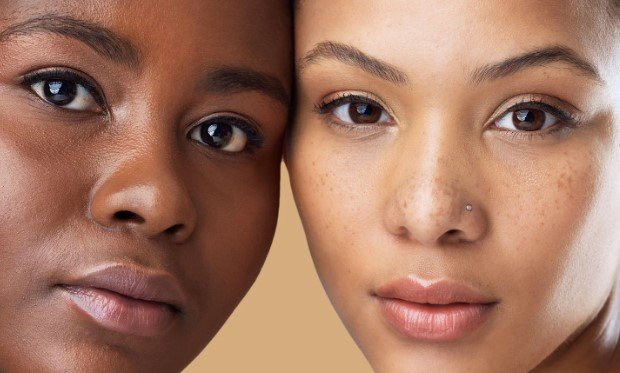The Rising Popularity of Lab-Grown Skincare Ingredients: Trends and Projections
Summary
- Lab-grown skincare ingredients are becoming increasingly popular in everyday self-care routines due to their effectiveness and safety.
- Survey reports indicate that consumers are more willing to invest in products with lab-grown ingredients because of their scientifically proven benefits.
- Data shows that the market for lab-grown skincare ingredients is projected to grow significantly in the coming years, indicating a shift towards more sustainable and innovative beauty solutions.
With the increasing emphasis on self-care and overall well-being, skincare has become an essential part of many people's daily routines. In recent years, there has been a growing interest in lab-grown skincare ingredients, which are produced in a controlled environment to ensure purity and effectiveness. This article will explore the data and statistics that support the increasing popularity and effectiveness of lab-grown skincare ingredients in everyday self-care routines.
Lab-grown skincare ingredients are created using biotechnology and scientific methods to replicate natural compounds found in plants and other sources. These ingredients are often more potent and stable than their natural counterparts, making them ideal for skincare formulations. According to a survey conducted by Mintel, a leading market research firm, 57% of consumers are more likely to purchase Skincare Products with lab-grown ingredients due to their perceived effectiveness and safety.
The Benefits of Lab-Grown Skincare Ingredients
Lab-grown skincare ingredients offer a range of benefits that make them attractive to consumers. These benefits include:
- Increased efficacy: Lab-grown ingredients are formulated to deliver specific skincare benefits, such as hydration, brightening, and anti-aging, with proven results.
- Sustainability: Lab-grown ingredients are produced in a controlled environment, reducing the need for harvesting rare or endangered plants. This makes them a more sustainable choice for environmentally conscious consumers.
- Safety: Lab-grown ingredients are rigorously tested for purity and safety, ensuring that they are free from contaminants and potential allergens.
- Customization: Lab-grown ingredients can be tailored to suit different skin types and concerns, allowing for personalized skincare solutions.
The market for lab-grown skincare ingredients is steadily growing, with projections indicating a significant increase in demand in the coming years. According to a report by Grand View Research, the global market for lab-grown skincare ingredients is expected to reach $6.78 billion by 2025, with a compound annual growth rate of 8.5% from 2019 to 2025. This growth can be attributed to several factors, including:
Consumer Demand
Consumers are increasingly seeking out Skincare Products that deliver measurable results and are backed by scientific research. Lab-grown ingredients offer a level of efficacy and reliability that is appealing to consumers looking for high-performance skincare solutions.
Environmental Concerns
With growing awareness of the impact of traditional beauty products on the environment, consumers are turning to more sustainable alternatives. Lab-grown skincare ingredients provide a solution that reduces the need for resource-intensive farming practices and minimizes waste.
Innovation and Technology
Advances in biotechnology and cosmetic science have enabled the development of cutting-edge skincare ingredients that deliver superior results. Lab-grown ingredients represent a new frontier in skincare innovation, offering solutions that were previously unattainable with natural ingredients alone.
The data and statistics surrounding lab-grown skincare ingredients paint a clear picture of their increasing popularity and effectiveness in everyday self-care routines. Consumers are drawn to these ingredients for their proven benefits, sustainable production methods, and innovative formulations. As the market for lab-grown skincare ingredients continues to grow, we can expect to see a shift towards more science-backed and environmentally friendly beauty solutions in the future.

Disclaimer: The content provided on this blog is for informational purposes only, reflecting the personal opinions and insights of the author(s) on the topics. The information provided should not be used for diagnosing or treating a health problem or disease, and those seeking personal medical advice should consult with a licensed physician. Always seek the advice of your doctor or other qualified health provider regarding a medical condition. Never disregard professional medical advice or delay in seeking it because of something you have read on this website. If you think you may have a medical emergency, call 911 or go to the nearest emergency room immediately. No physician-patient relationship is created by this web site or its use. No contributors to this web site make any representations, express or implied, with respect to the information provided herein or to its use. While we strive to share accurate and up-to-date information, we cannot guarantee the completeness, reliability, or accuracy of the content. The blog may also include links to external websites and resources for the convenience of our readers. Please note that linking to other sites does not imply endorsement of their content, practices, or services by us. Readers should use their discretion and judgment while exploring any external links and resources mentioned on this blog. Content in this blog is copyright protected, please do not repost or embed content without prior written permission.